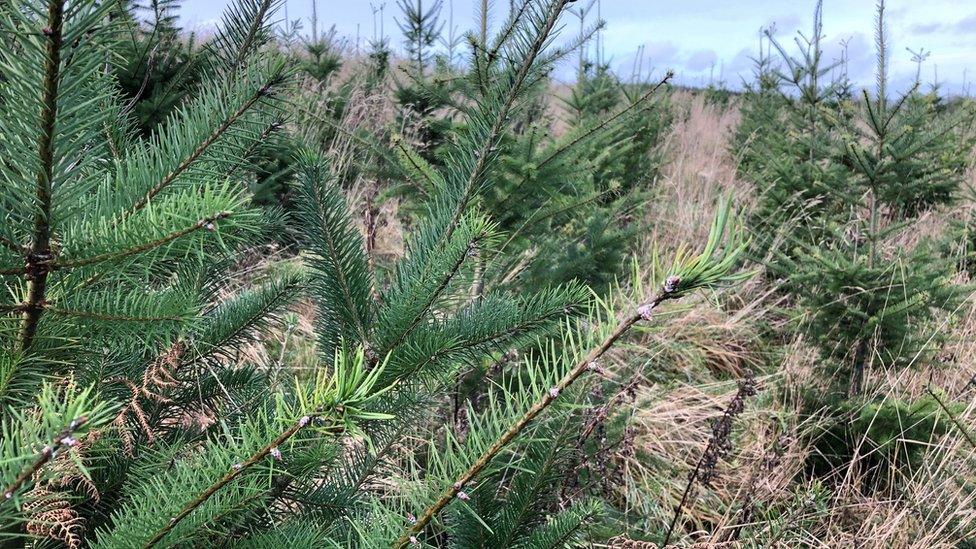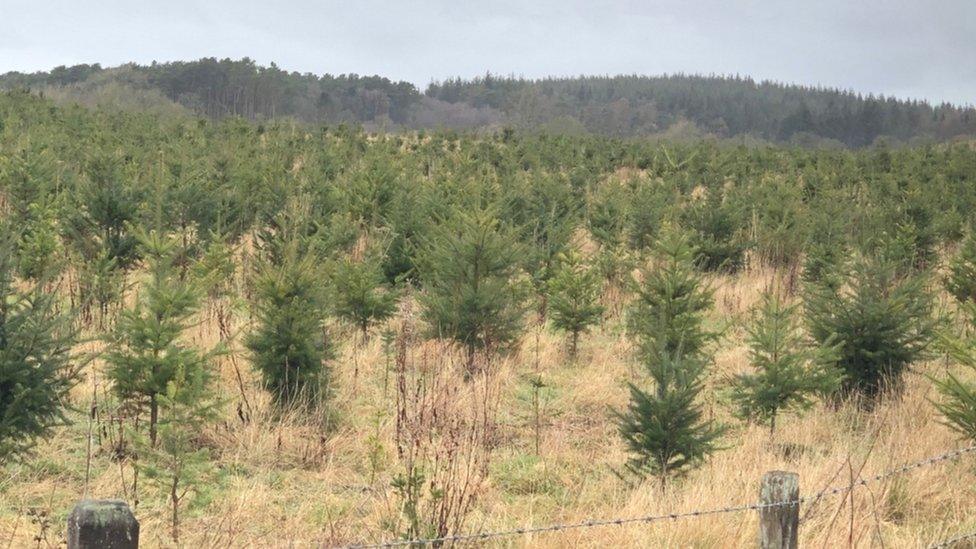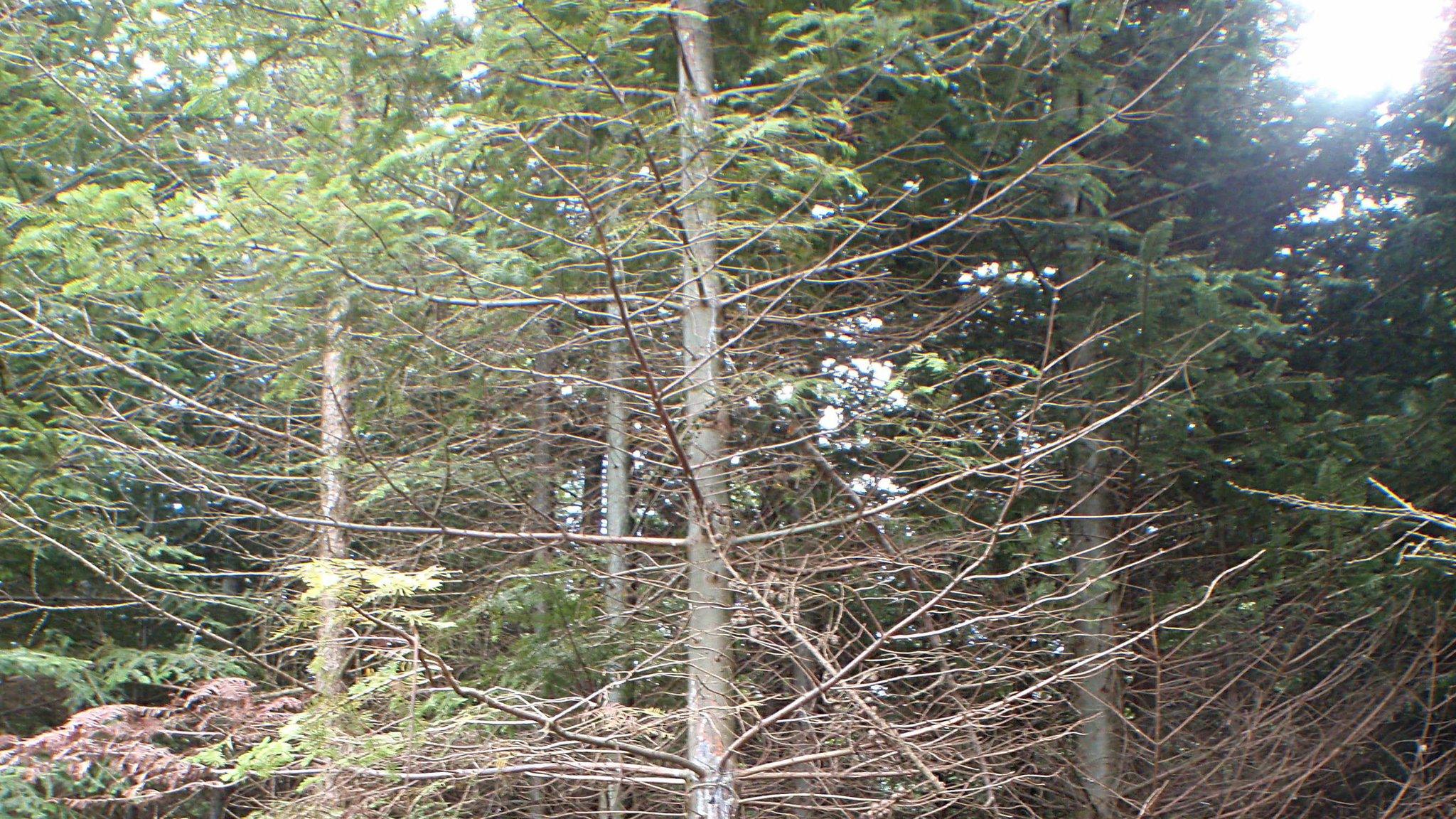Tree diseases fuel change in Scottish forest planting
- Published

Tree planting practices across Scotland are changing to try to reduce the impact of future disease outbreaks
Diseases which have wiped out swathes of Scottish trees are fuelling a change in planting practices.
Forest planners are looking at ways to reduce the threat they pose.
Dutch elm disease first reached Britain a century ago while, more recently, phytophthora ramorum has caused major damage to larch trees.
Southern and western Scotland have been badly affected. The only way to slow its progress is the felling of infected trees and those nearby.
More than half a million larches have been cut down on the island of Arran alone in the past two years.

At Dalbeattie Forest they hope new trees will cope well with climate change
Alan Gale, adaptation and resilience manager for Forestry and Land Scotland (FLS), said it had caused a dramatic change to the landscape.
"If you had suggested to me 20 years ago that most larch is south and west Scotland in the 2020s would be gone I'd have found it difficult to believe," he said.
"We have seen that disease impacts so quickly and changes all the plans, it has been catastrophic in some parts."
It has prompted a change in planting patterns.
Foresters are increasingly diversifying the trees they plant, using a mosaic of different species and using new species which can adapt better to climate change and be more resilient in the face of storms and diseases.

By mixed planting it is hoped the impact of any diseases can be reduced
It means the likes of Noble Fir, Western Red Cedar, Western Hemlock, Macedonian Pine, European Silver Fir and Pacific Silver Fir are now being grown in larger numbers than ever before in Scotland.
They already grow well and forest planners are anticipating they will thrive in 50 years' time as the climate warms.
At Glentress, near Peebles, FLS has purchased 500 hectares (1,235 acres) and planted a wide variety of species, including native Scottish oak, hornbeam, birch, noble fir, Norway spruce and lots of Douglas fir.
Outside Dalbeattie, near the Solway coast, a 10-hectare (25 acre) plot has been repurposed and planted up with Douglas fir, anticipated to be one of the species that will cope well with climate change.
Although diversification of forestry started in earnest about 10 years ago, it is now picking up pace.
More foresters across Scotland - and the UK - are seeing how diversification of species is a key part of the solution to the challenges of climate change.
Mr Gale said: "There's a big push to get more diversity into our forests in Scotland - especially our productive, timber-producing forests - to make them more resilient to pests and diseases and climate change.
"With climate change the science is clear but with pests and diseases things are much less certain.
"We need to plan for all eventualities, we have no idea of what's coming and the impact is often very fast and catastrophic."

Climate change and the risk of storms are other factors affecting planting patterns
Large scale loss of forest due to such events has a significant financial impact but the loss of "locked up" carbon is now considered just as important.
There are always new threats just around the corner too.
A fungus-like pathogen, phytophthora pluvialis - never before detected in Europe - was found in a woodland in Cornwall last autumn and more outbreaks have since been detected, including in Scotland.
"That's precisely why we are rapidly ramping up our efforts to diversify Scotland's timber-producing forests," said Mr Gale.
"By planting a 'portfolio' of species we are spreading the risks, over a longer time period."
It is hoped that can help to avoid the mass felling operations which have had such a major impact on many areas in recent years.
Related topics
- Published15 June 2018
